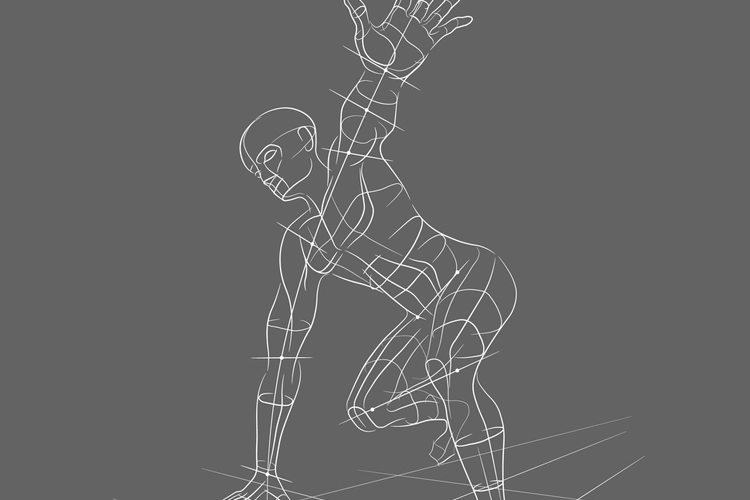The lifelike movements and expressions of characters are nothing short of mesmerizing. Whether it’s in a blockbuster movie, a video game, or a short film, these characters owe their realism and fluidity to a crucial behind-the-scenes process known as 3D rigging. This article delves into the depths of 3D rigging, unraveling its complexities, and highlighting its significance in breathing life into animated characters.
The Foundation of 3D Rigging
3D rigging is the process of creating a digital skeleton for a 3D character or object. Think of it as the framework that allows animators to control the movement and deformation of these characters. The rig, as it’s commonly called, comprises a network of interconnected joints and bones that mirror the structure of a real-life skeleton. Each joint corresponds to a specific part of the character’s body, from the fingers to the spine, and even facial features. It is through this intricate system that animators can manipulate and bring these characters to life with lifelike motions and expressions.
The rigging process begins with the careful placement of joints within the 3D model. These joints are strategically positioned to mimic the movement of real bones. For example, the joints of an arm would be placed at the shoulder, elbow, and wrist, allowing for natural bending and rotation. This skeletal structure provides the foundation upon which the character’s movements will be built.
Artistry in Motion: Animation Controls
While the skeletal structure forms the basis of 3D rigging, the real magic lies in the animation controls. These are the user-friendly interfaces that allow animators to manipulate the rig effortlessly. Through a combination of hierarchies, controllers, and constraints, animators can determine how the character moves, bends, or contorts. For instance, a controller can be used to make a character lift an arm, while another can control the subtle nuances of facial expressions, such as a smile or a frown. These controls give animators the power to craft the most intricate and natural movements that make characters relatable and engaging.
Hierarchy plays a crucial role in 3D rigging. It defines the relationship between different parts of the rig. For example, a character’s hand is hierarchically linked to the forearm, which is linked to the upper arm, and so on. This hierarchy ensures that when an animator moves the upper arm, the entire arm, including the hand, follows realistically. Controllers are then placed at specific points in the hierarchy to allow for easy manipulation of these body parts.
Constraints, on the other hand, are rules or limitations placed on the rig to maintain realism. For instance, a constraint might be applied to restrict a character’s leg movement so that it cannot bend in physically impossible ways. This helps in keeping the character’s movements within the bounds of what is anatomically plausible.
The Role of Skinning in 3D Rigging
One pivotal aspect of 3D rigging that often goes unnoticed is skinning. Skinning involves the process of attaching the character’s 3D model to the rig, ensuring that the mesh moves harmoniously with the underlying skeleton. This is where the artistry truly shines, as skilled riggers meticulously fine-tune the way the character’s skin deforms during movement. This painstaking attention to detail prevents unsightly deformations or glitches, maintaining the illusion of reality. A well-skinned character can seamlessly transition from walking to running, from smiling to crying, all while retaining its visual integrity.
In the skinning process, each vertex of the character’s 3D model is associated with a specific joint in the rig. When a joint moves, the vertices connected to it move as well, deforming the character’s mesh. Riggers use various techniques and tools to ensure that this deformation is as natural and smooth as possible. This meticulous work is essential for characters to appear realistic and avoid any jarring visual distortions during animation.
The Importance of 3D Rigging in Animation
3D rigging is the unsung hero of animation, the invisible force that makes characters believable and captivating. It is the backbone upon which animators build their storytelling. Without a well-structured rig, animators would struggle to convey emotions, actions, and interactions convincingly. Imagine a character without the ability to blink, smile, or even take a step forward—such limitations would detract from the immersion and impact of the animation. 3D rigging empowers animators to unleash their creativity and push the boundaries of what’s possible in the world of digital storytelling.
Evolution and Future of 3D Rigging
As technology continues to advance, so does the field of 3D rigging. With the advent of machine learning and artificial intelligence, rigging processes are becoming more streamlined and efficient. Automation tools are emerging, reducing the manual labor required for rigging tasks. This evolution allows animators to focus more on the artistic aspects of their craft and less on the technicalities. As we move forward, 3D rigging will play an increasingly vital role in shaping the animation industry, enabling more immersive and realistic experiences for audiences worldwide.
Machine learning algorithms are now being employed to assist in the rigging process. These algorithms can analyze the movement patterns of real-life subjects and apply them to 3D rigs, creating more authentic animations. Moreover, the use of AI-driven facial recognition technology allows for even greater precision in capturing the nuances of facial expressions, taking character realism to new heights.
Ready to explore the world of 2D and 3D animation services and rigging? Dive into the realm of creativity and technology at The Studio Bridge, where you can learn, collaborate, and master the skills that bring animated characters to life.
